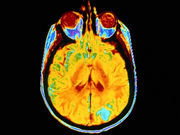In some cases, no difference in default-mode networks between superagers and young adults
WEDNESDAY, Sept. 14, 2016 (HealthDay News) — Key brain regions in mentally sharp “superagers” are similar to those of people much younger, according to a study published in the Sept. 14 issue of The Journal of Neuroscience.
The study, supported by the U.S. National Institute on Aging, involved 17 superagers. These superagers were between the ages of 60 and 80. They scored as well on memory tests as adults who were 40 to 50 years younger, the investigators found. The study also included 23 people aged 60 to 80 who had normal scores or performed as expected on memory tests. Additionally, 41 younger adults, aged 18 to 35, were included in the study.
Imaging studies indicated that older adults with youthful memory abilities tended to have brain regions in key paralimbic and limbic nodes of the default mode and salience networks that appeared similar to younger adults. The thickness of certain regions (including the anterior temporal cortex, rostral medial prefrontal cortex, and anterior midcingulate cortex) correlated with memory performance, as did hippocampal volume.
“We looked at a set of brain areas known as the default-mode network, which has been associated with the ability to learn and remember new information, and found that those areas — particularly the hippocampus and medial prefrontal cortex — were thicker in superagers than in other older adults,” senior coauthor Alexandra Touroutoglou, Ph.D., of Massachusetts General Hospital in Boston, said in a hospital news release. “In some cases, there was no difference in thickness between superagers and young adults.”
Copyright © 2016 HealthDay. All rights reserved.








